About Gabapentin
There are many drugs used to treat anxiety. New studies are now showing that Gabapentin has been a successful treatment for individuals who suffer from anxiety. However, there are no randomized controlled trials on the effectiveness of this medication in generalized anxiety disorder (GAD), and there are only a few case reports.
People with GAD who take Gabapentin have shown to be less irritable, reduce the use of alcohol as self-medication, have fewer depression symptoms, feel less anxious anticipating the future, improve in phobic avoidance (going out in public more and experiencing a significant decrease in panic disorder and reduction of panic attacks).
Gabapentin is an anticonvulsant drug that is primarily used to treat seizures and the pain that follows after an episode of shingles. Gabapentin is considered an off-brand drug used to treat anxiety. Neurontin is the most common brand name for Gabapentin, as well as Horizant and Gralise. Gabapentin has shown to help people with sleeping better, as insomnia is a symptom of anxiety.
Side Effects of Gabapentin
Like all medications, there are several side effects to taking Gabapentin. Side effects that you experience are relative to your personal reaction to the drug. Everyone is different, so you may not experience side effects that others do or don’t. Some side effects can be nausea, vomiting, tremors, dizziness, sleepiness, double vision, loss of control of bodily movements, fluid retention, difficulty speaking, jerky movements, unusual eye movements, double vision, and unsteadiness.
If you begin to experience any of these symptoms, speak with your doctor immediately. Get emergency help if you suspect you are having an allergic reaction like; swelling of your face, lips, tongue, or throat, hives, and difficulty breathing. If you notice that your symptoms are worsening, contact your doctor immediately. You may not notice symptoms until weeks after taking Gabapentin.
Is Gabapentin Approved by the U.S. Food and Drug Administration (FDA) ?
Gabapentin was originally approved by the U.S. Food and Drug Administration (FDA) in December 1993, for use as an adjuvant medication to control partial seizures (effective when added to other antiseizure drugs) in adults; that indication was extended to children in 2000. In 2004, its use for treating postherpetic neuralgia (neuropathic pain following shingles) was approved.
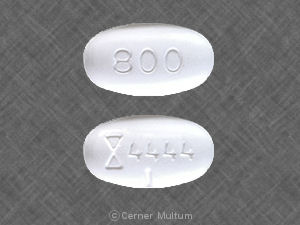
Gabapentin is best known under the brand name Neurontin manufactured by Pfizer subsidiary Parke-Davis. A Pfizer subsidiary named Greenstone markets generic gabapentin.
In December 2004 the FDA granted final approval to a generic equivalent to Neurontin made by the Israeli firm Teva.
Neurontin began as one of Pfizer’s best selling drugs; however, Pfizer has come under heavy criticism and serious litigation for its marketing of the drug.
They face allegations that, behind the scenes, Parke-Davis marketed the drug for at least a dozen supposed uses that the FDA had not approved.
Today it is a mainstay drug for migraines, even though it was not approved for such use in 2004.
What is Gabapentin Used for ?
Gabapentin comes as a capsule, a tablet, an extended-release (long-acting) tablet, and an oral solution (liquid) to take by mouth. Gabapentin capsules, tablets, and oral solution are usually taken with a full glass of water (8 ounces [240 milliliters]), with or without food, three times a day.
These medications should be taken at evenly spaced times throughout the day and night; no more than 12 hours should pass between doses. The extended-release tablet (Horizant) is taken with food once daily at about 5 PM. Follow the directions on your prescription label carefully, and ask your doctor or pharmacist to explain any part you do not understand. Take gabapentin exactly as directed. Do not take more or less of it or take it more often than prescribed by your doctor.
Gabapentin extended-release tablets cannot be substituted for another type of gabapentin product. Be sure that you receive only the type of gabapentin that was prescribed by your doctor. Ask your pharmacist if you have any questions about the type of gabapentin you were given.
Swallow the extended-release tablets whole; do not cut, chew, or crush them.
If your doctor tells you to take one-half of a regular tablet as part of your dose, carefully split the tablet along the score mark. Use the other half-tablet as part of your next dose. Properly dispose of any half-tablets that you have not used within several days of breaking them.
If you are taking gabapentin to control seizures or PHN, your doctor will probably start you on a low dose of gabapentin and gradually increase your dose as needed to treat your condition. If you are taking gabapentin to treat PHN, tell your doctor if your symptoms do not improve during your treatment.
Gabapentin may help to control your condition but will not cure it. Continue to take gabapentin even if you feel well. Do not stop taking gabapentin without talking to your doctor, even if you experience side effects such as unusual changes in behavior or mood. If you suddenly stop taking gabapentin tablets, capsules, or oral solution, you may experience withdrawal symptoms such as anxiety, difficulty falling asleep or staying asleep, nausea, pain, and sweating. If you are taking gabapentin to treat seizures and you suddenly stop taking the medication, you may experience seizures more often. Your doctor may decrease your dose gradually over at least a week.
Your doctor or pharmacist will give you the manufacturer’s patient information sheet (Medication Guide) when you begin treatment with gabapentin and each time you refill your prescription. Read the information carefully and ask your doctor or pharmacist if you have any questions. You can also visit the Food and Drug Administration (FDA) website (http://www.fda.gov/Drugs) or the manufacturer’s website to obtain the Medication Guide.
Off-label use exposes patients to adverse effects and generally is not supported by evidence.
The only conditions for which gabapentinoid drugs are FDA-approved to manage pain are postherpetic neuralgia (both gabapentin and pregabalin [Lyrica]) and diabetic neuropathy, spinal cord injury, and fibromyalgia (pregabalin only). Nevertheless, use of these drugs has tripled during the past 15 years. This increase likely reflects gabapentinoid use for managing non–FDA-approved pain conditions, in part to avoid opioid use. In this review, researchers identified 34 placebo-controlled randomized trials (with ≈4200 patients) of gabapentinoids for noncancer, non–FDA-approved pain conditions. Most trials’ durations were 4 to 12 weeks.
Results of the review were as follows:
- Only weak evidence supports use of gabapentin for diabetic neuropathy (only pregabalin is approved for this indication).
- Minimal evidence supports use of gabapentin for nondiabetic painful neuropathies.
- Studies of gabapentinoids for managing low back pain or sciatica have been largely negative.
- Only minimal evidence supports a clinically meaningful benefit of off-label gabapentin use for fibromyalgia (for which pregabalin is approved).
- Both gabapentin and pregabalin are approved for managing postherpetic neuralgia, but both are used often for acute zoster pain, for which studies have shown no benefit.
- A small number of studies of gabapentinoid use for other pain syndromes (e.g., traumatic nerve injury, complex regional pain syndrome, burn injury, sickle cell pain) showed no clinically important benefits.
Dr. Brett is an author of this article and is the Editor-in-Chief of NEJM Journal Watch General Medicine; however, he had no role in selecting or summarizing this article.
How to use gabapentin oral ?
Read the Medication Guide and, if available, the Patient Information Leaflet provided by your pharmacist before you start taking gabapentin and each time you get a refill. If you have any questions, ask your doctor or pharmacist.
Take this medication by mouth with or without food as directed by your doctor. Dosage is based on your medical condition and response to treatment. For children, the dosage is also based on weight.
If you are taking the tablets and your doctor directs you to split the tablet in half, take the other half-tablet at your next scheduled dose. Discard half tablets if not used within several days of splitting them. If you are taking the capsules, swallow them whole with plenty of water.
It is very important to follow your doctor’s dosing instructions exactly. During the first few days of treatment, your doctor may gradually increase your dose so your body can adjust to the medication. To minimize side effects, take the very first dose at bedtime.
Do not take this medication more often or increase your dose without consulting your doctor. Your condition will not improve any faster and the risk of serious side effects may increase.
Do not stop taking this medication without consulting your doctor. Some conditions may become worse when the drug is suddenly stopped. Your dose may need to be gradually decreased.
Antacids containing aluminum or magnesium may interfere with the absorption of this medication. Therefore, if you are also taking an antacid, it is best to take gabapentin at least 2 hours after taking the antacid.
Different forms of gabapentin (such as immediate-release, sustained-release, enacarbil sustained-release) are absorbed in the body differently. Do not switch from one form to the other without consulting your doctor.
Tell your doctor if your condition does not improve or if it worsens.
Pain Medications, Pain Relief, and Pain Management
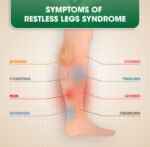
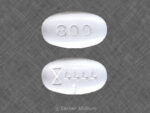


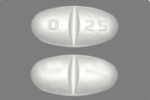

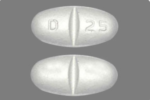
COMMENT
The markedly increased off-label use of gabapentinoids to manage pain has no or limited evidence of benefit. This practice is worrisome, especially given known high rates of side effects, including dizziness, somnolence, and unsteadiness. In addition, the authors note that patients often are prescribed gabapentinoids to avoid opioid use, but such patients sometimes still use opioids, either prescribed or illicit. The combination of gabapentinoids and opioids is associated with excess risk for opioid overdose.